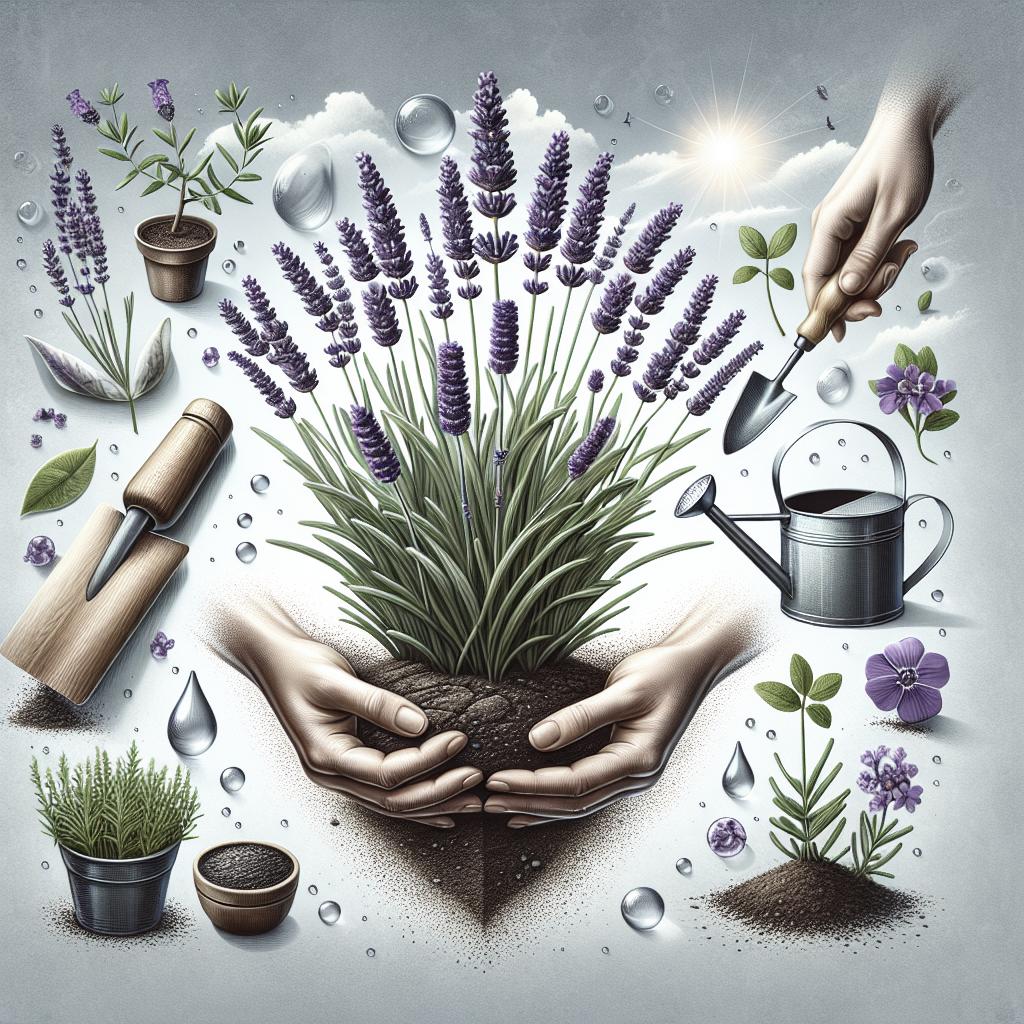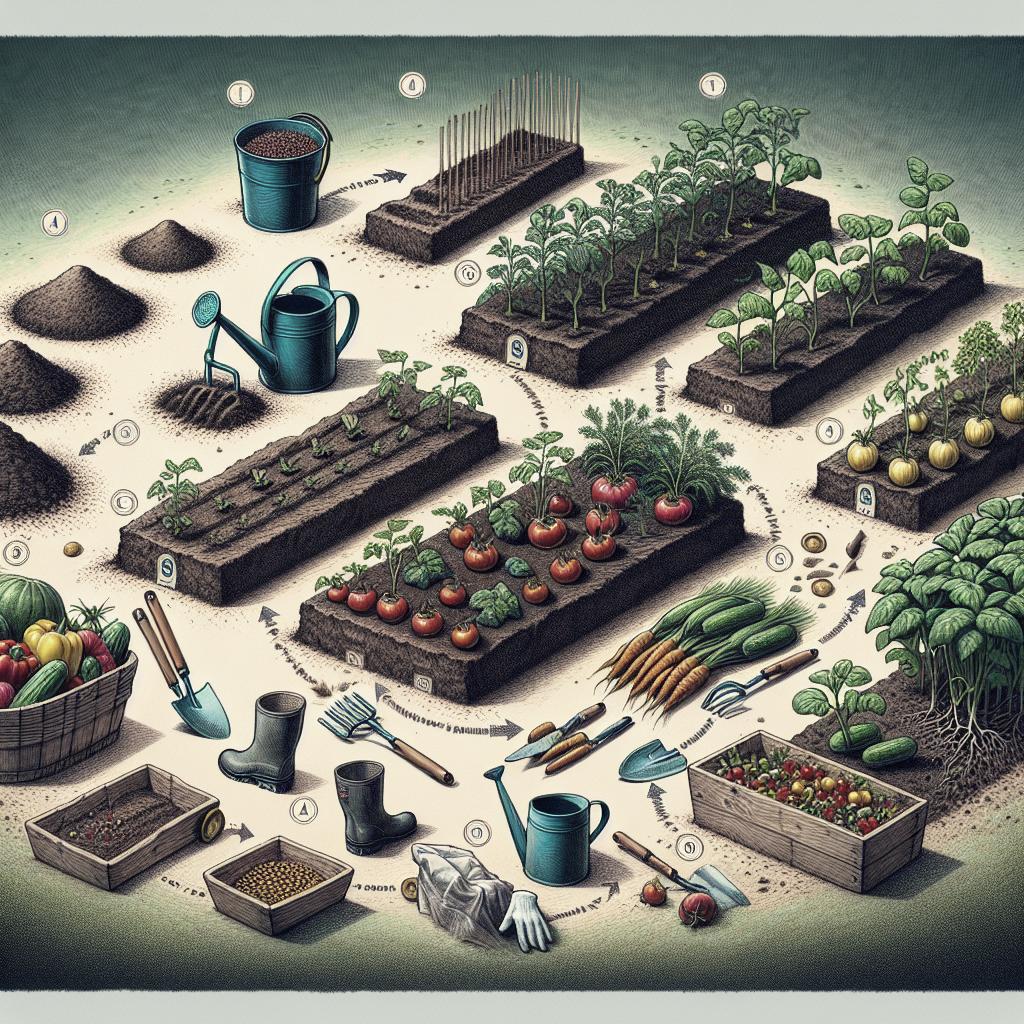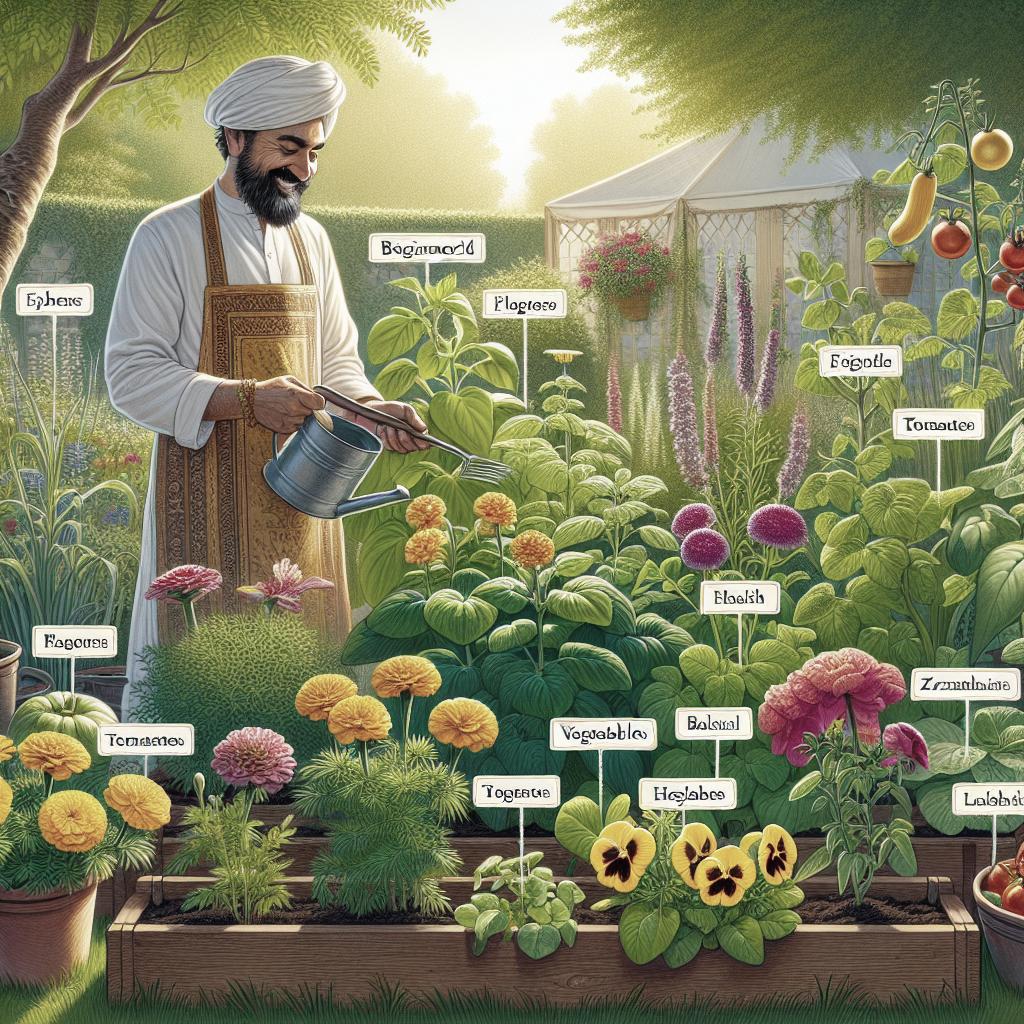“`html
How to Grow Lavender Successfully
Lavender, with its beautiful blooms and enchanting fragrance, is a favorite among gardeners. To cultivate lavender successfully, a combination of proper planting techniques, knowledgeable care, and understanding of its seasonal habits is essential. This comprehensive guide explores the ideal soil conditions, tips for successful care, and steps to resolve common problems. Beyond the basics, discover ways to use lavender in cooking and answer frequent inquiries about growing and maintaining lavender plants. Whether you’re a seasoned gardener or a beginner, this guide will help transform your gardening space into a fragrant haven.
Quick Guide to Growing Lavender
Lavender thrives in regions with plenty of sunlight, preferring at least 6 hours of direct light per day. When planning your garden, choose a spot where the lavender can bask in sunlight, as this is critical for its growth and flowering.
While lavender is drought-tolerant and requires minimal maintenance, it’s essential to plant it in well-drained, sandy, or rocky soil. The pH should be neutral to slightly alkaline, ensuring the roots aren’t in waterlogged conditions.
Soil, Planting, and Care
Begin by preparing your soil: mix organic matter like compost to improve drainage if necessary. Plant lavender in the spring as temperatures begin to rise but only after the threat of frost has passed.
Space plants about three feet apart to give them room to grow and ensure adequate air circulation, reducing the risk of disease. Water your lavender garden thoroughly but infrequently, letting the soil dry out between watering sessions.
Troubleshooting
My plants look great and are growing but not flowering. Any suggestions?
If your lavender is growing well but not flowering, the most common issue is insufficient sunlight. Ensure the plants receive enough direct sun exposure each day.
Also, avoid over-fertilizing your lavender plants. Excess nitrogen can promote lush foliage at the expense of blooms.
What is the best way to keep lavender plants over the winter?
In locations with harsh winters, consider protecting your lavender with a layer of mulch to insulate the roots. Additionally, covering the plants with burlap can help shield them from cold winds.
For container-grown lavender, moving them indoors to a cool, bright location during winter months can protect them from extreme conditions.
Can one lavender plant be split into several in the springtime?
Splitting or dividing lavender is generally not recommended, as the plant does not respond well to root disturbance. Instead, propagate lavender through cuttings in late spring.
To take a cutting, choose a healthy stem, remove leaves from the bottom half, and plant it in sandy soil. With proper care, cuttings can establish roots and develop into full plants.
Harvest and Storage
To harvest lavender, choose a dry day when flower spikes are fully mature but have not yet opened. Snip the stems early in the day to capture maximum fragrance.
Hang lavender sprigs upside down in a cool, dark area to dry. Once desiccated, store them in airtight containers away from direct sunlight to preserve their scent and color.
Uses
I just purchased lavender. Can I use it in cooking?
Absolutely! Lavender can enhance various dishes, infusing them with a unique, floral aroma. Use culinary lavender, which is generally sweeter, in baked goods, teas, and lemonades.
When cooking with lavender, less is more. Start with a small amount to avoid overpowering the dish. Lavender pairs wonderfully with honey, lemon, and basic herbs such as rosemary and thyme.
FAQs
What is the secret to growing lavender?
The key to successful lavender cultivation lies in ample sunlight and well-draining soil. Regular pruning after flowering promotes healthy growth and helps control the plant’s shape.
Additionally, avoid over-watering and fertilizing, focusing on creating an environment that mimics lavender’s natural, arid habitat.
Can I grow lavender in a container?
Lavender is well-suited for container gardening. Choose a terra cotta pot, which aids in drainage and breathability, matching it with sandy soil mixed with a bit of gravel.
Position your potted lavender in a place that receives a minimum of six hours of full sunlight daily, and water only when the soil is dry to the touch.
I have never planted lavender before and need some information about its habits. How much is it likely to spread?
Lavender plants generally spread up to two to three feet wide, making adequate spacing during planting essential. This spread allows for optimal air flow and reduces competition for nutrients.
With routine pruning post-blooming, you can manage lavender’s growth, maintaining its shape while encouraging denser flowering.
Future Prospects
| Aspect | Key Points |
|---|---|
| Optimal Growth Conditions | 6+ hours of sunlight, well-draining soil, minimal water. |
| Troubleshooting | Ensure sunlight, avoid excess fertilizer, protect in winter. |
| Plant Propagation | Use cuttings rather than division; apply in late spring. |
| Harvesting | Harvest before flowers open; dry in a dark place. |
| Culinary Uses | Use sparingly in recipes and pair with complementing flavors. |
| Container Growing | Use terra cotta pots, sunlight, and dry conditions. |
“`


